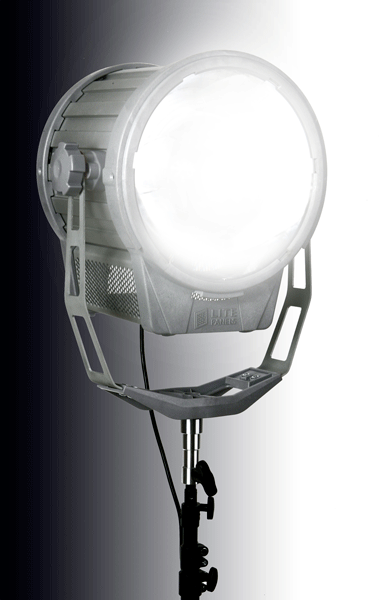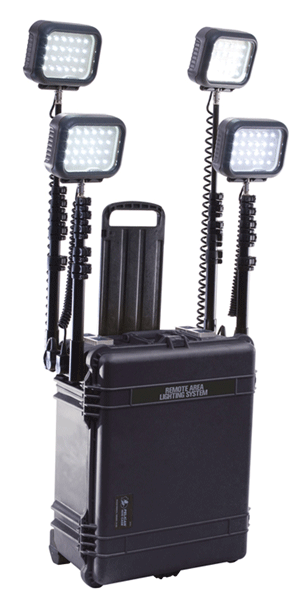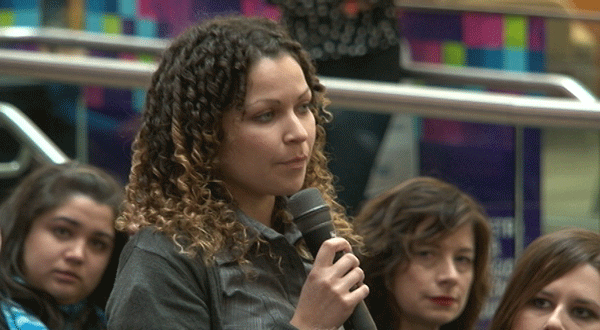Producing Conference Video Pt. 2: Lighting and Audio
Award-winning producer Shawn Lam looks at the art and science of stage lighting and the challenges of making lighting designed for performance work for video. He also discusses the meat-and-potatoes things you need to know for microphone selection and successful live-recorded conference audio.
Litepanels Sola Fresnel
At NAB 2010 Litepanels introduced a game changing light in the LP Sola Fresnel. Fresnels are a class of closed lens light that both focus and diffuse its light source. The Solas produce single-shadow properties and feature a 10-70 degree beam control and are dimmable from 0-100%. The big game changer comes from their light output per watt, which is between 8 and 9 times more efficient than a tungsten light.
The Sola6 draws only 75 watts yet outputs the same amount of light as a 650W tungsten, while the Sola12 draws 250 watts yet, incredibly, outputs the equivalent of a 2,000W light. LP Sola Fresnels are daylight-balanced, which makes them ideal for use where there is natural light but unlike HMI lights, these Litepanels models do not require ballast.

Litepanels daylight-balances Sola Fresnel
Pelican RALS
When I say "Pelican" to camera operators, they immediately think of the industry-standard black cases that protect their most valuable pieces of equipment. That isn't likely to change for the Timex of equipment protection-as in "takes a licking, keeps on ticking"-but what Pelican is putting in their new RALS cases is likely to catch your attention the next time you're looking for a portable lighting solution for interviews.

Pelican RALS case
Often at conferences and conventions we get asked to conduct on-location interviews during the breaks between speakers without the ability to set up and leave up any lighting in advance. Setting up lighting and running power with hundreds of attendees rushing for coffee and so called "bio breaks" is just not possible so that rules out any plug-in solutions and usually leaves us with battery-powered ENG style on-camera lights. This is OK in most situations, but leaves something to be desired when compared to a proper 3-point lighting setup.
Enter the Pelican RALS (remote area lighting system). Inside the ordinary, very heavy (due to the batteries) case, are LED lights with stands and a charger. The lights are mounted to telescopic stands that extend from the case and are available in 1, 2, and 4 light systems. Operating time is 7 hours at low setting and 14 at high.
Giving Audio a Fair Hearing
I often try to impress on new videographers that the audio part of video is just as important as the video itself, but audio usually falls much lower on videographers' many priorities. Like the bride who undervalues her wedding video budget, audio is one of those things you just can't go back a make right after the fact. Similar to lighting, for conferences with larger or more complicated audio requirements, I always advise hiring a professional outfit that knows their trade as well as you know video. Then work with them to get the best balance, in this case, of audio for both the live audience and for the purposes of the video you may stream live or produce for DVD or online on-demand access later.

Having a pair of microphones ensures strong audio levels, even when your speaker is not looking straight ahead.
One of the differences between audio for a live audience and audio produced for both a live audience and for video is that with video, you hear only what goes into the microphones that are turned on. It might sound pretty simple, but deviations are often overlooked or allowed to pass without much thought about what happens to the video recorded without the audio. One common example is when there are questions from the audience that are not asked in a handheld Q&A microphone but rather are yelled out for all to hear. Another all-too-frequent scenario is when, at the first sign of a bit of the inevitable feedback that always seems to plague conferences at some point, the speaker decides to ditch the microphone and asks the audience if they can still hear him or her and then continues without any amplification that would end up in the XLR feed that connects with your video camera.

A handheld wireless mic being used for audience interaction
Related Articles
Whether you're shooting a conference, a convention, or an AGM, the setup of the shoot is one of the most important parts of the production process. It's the step where you select the equipment, establish your camera positions, lay your cables, and check and recheck your audio and lighting.
What happens when you deliver your event live? This is nothing new for live TV broadcasters, but more and more event video producers are being asked to perform their postproduction activities in real-time—that is, live as the event is occurring.
Award-winning producer Shawn Lam looks at two key elements of the process: capturing multimedia presentations effectively for both live-switched productions and post-produced edits, and how to become a successful technical director of a live-switched shoot, whether for IMAG delivery or providing a live feed for broadcast or webcast.